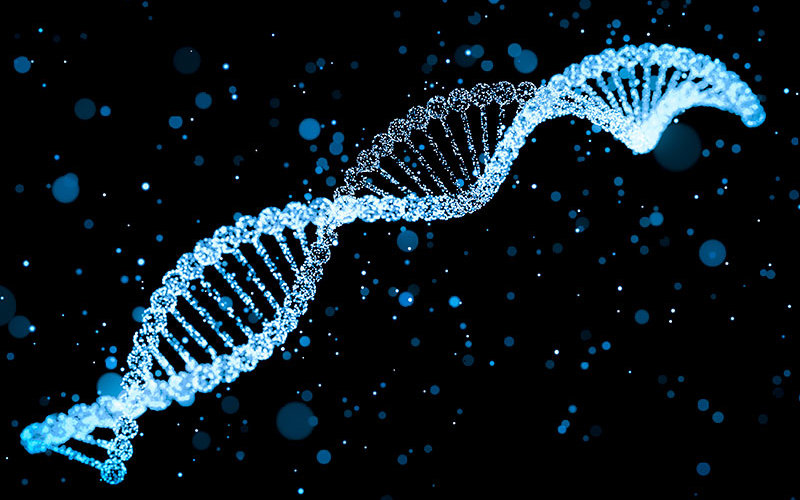
Who am I? Where did I come from? Who are my ancestors?
With DNA test kits available to the public, these are questions being answered for those who want to learn more about their genetic heritage — yet there is a lack of information, especially from a scientific standpoint, about these popular tests, said Colleen Greene, a genealogist and marketing librarian at Pollak Library.

Colleen Greene
“Direct-to-consumer DNA tests are extremely popular, but often misunderstood by the public, academics and the media — and also are sometimes controversial,” Greene said.
To share the science behind DNA and explain how direct-to-consumer DNA testing works, Greene has curated a new library exhibit on the “History in Our Genes: Human DNA,” which opens April 17 at Pollak Library and continues through Sept. 25.
The exhibit focuses on the biological concepts of human DNA, as well as how scientists can explain humanity over time. Science and engineering librarian Robert Tomaszewski co-curated the exhibit, and Nikolas Nikolaidis, professor of biological science, shared his expertise on scientific concepts and DNA research.

Robert Tomaszewski
“Our exhibit takes a scholarly interdisciplinary look at the science and concepts behind the tests, and presents a number of examples explaining how these tests are used to discover geographic origins and ethnicity, discover family history and solve historical mysteries,” Greene noted.
Nikolaidis, a molecular biologist, explained that DNA, or deoxyribonucleic acid, contains the instructions — a genetic code unique for each individual — for making the essential building blocks of every organism, including humans.

Nikolas Nikolaidis
“DNA is the master plan for life on Earth and the source of the magnificent variation that exists in nature,” Nikolaidis relayed. “Small changes, or mutations, in this code result in variations among individual humans, other animals, plants, fungi, bacteria and most viruses. These changes can result in modifications that allow organisms to survive their environment.”
DNA can tell people about their ancestry since DNA instructions are passed from parent to child, with roughly half of a child’s DNA originating from the father and half from the mother. After each generation, changes in this genetic code are passed to the next generation.
“Some of these changes are unique to each individual, some are unique to a particular population, some are specific to a particular ethnic group, and some are unique in humans,” Nikolaidis said. “Therefore, we can trace a person’s ancestry by defining the set of changes that are unique to their family, population or ethnicity. Our DNA and ancestry may link us to places that we would never imagine.”
Greene shared that through DNA testing, ethnicity results are fairly accurate at pinpointing ancestry at a continental or regional level, but getting more specific, such as the percentage of an ethnicity, is not as clear-cut. However, seeking a biological family match is more precise: “If you take a DNA test to learn more about your ancestry, be prepared for surprises,” such as family members individuals didn’t know existed or unexpected ethnicity results, she pointed out.
While there are many interesting facts about DNA shared in the exhibit, one science-based fact stands out: “If we stretch out my DNA, or yours, DNA from all of our cells would reach the sun and back many times,” Nikolaidis said. “Despite the fact that we are unique and so different in our appearance, our DNA — all 3 billion letters of it — is 99.9% identical to each other. So we are not so different after all, right?”
As home DNA tests continue to grow in popularity, they will become even more accurate and more specific, Nikolaidis said. With new, faster and cheaper technologies, the more information per individual human will be known, such as a complete DNA profile, complete RNA profile (the first product of DNA in it journey to transfer information), complete protein profile (the final products of DNA), and a system’s view of each individual’s cells and organs.
“My hope is that people who know little, will know more and be informed about those specifics of DNA, its use and why we should care. As for people that know more, I hope that they will appreciate more the complexity and use of this fascinating molecule that enabled, enables, and will enable life on Earth.”